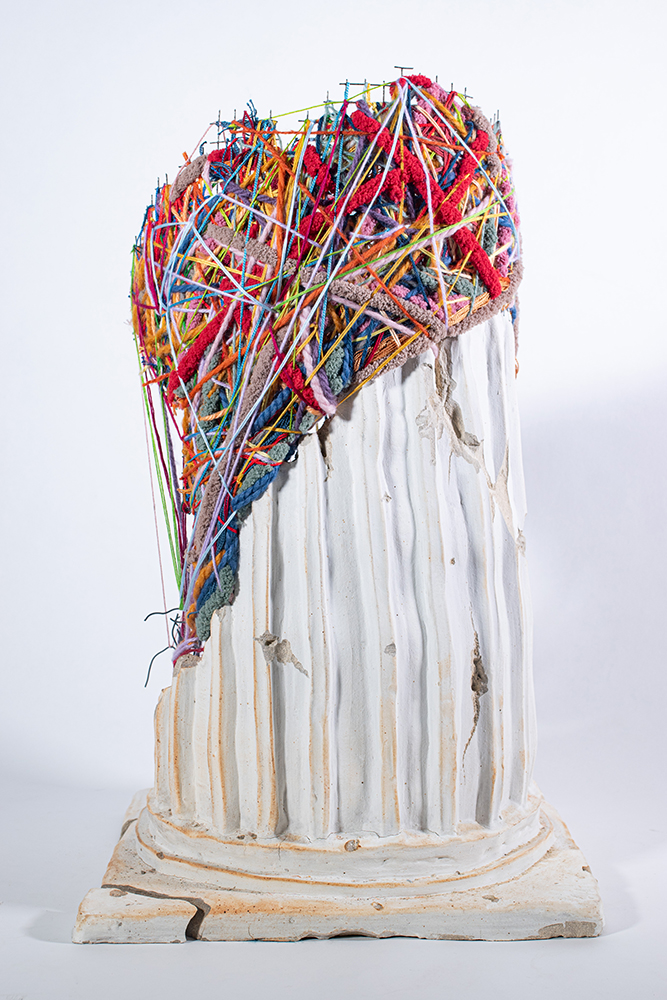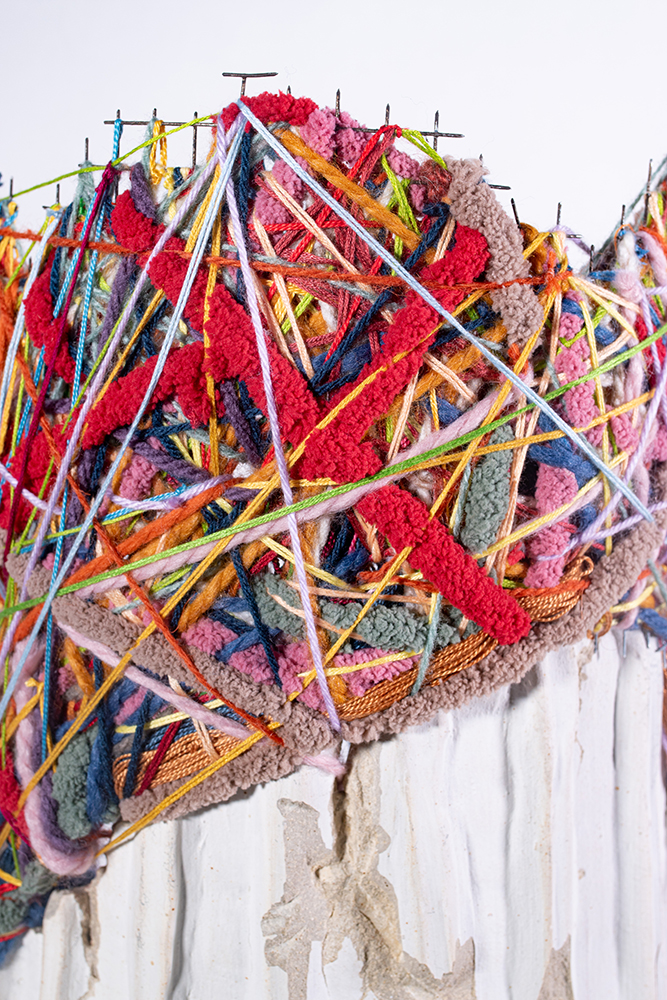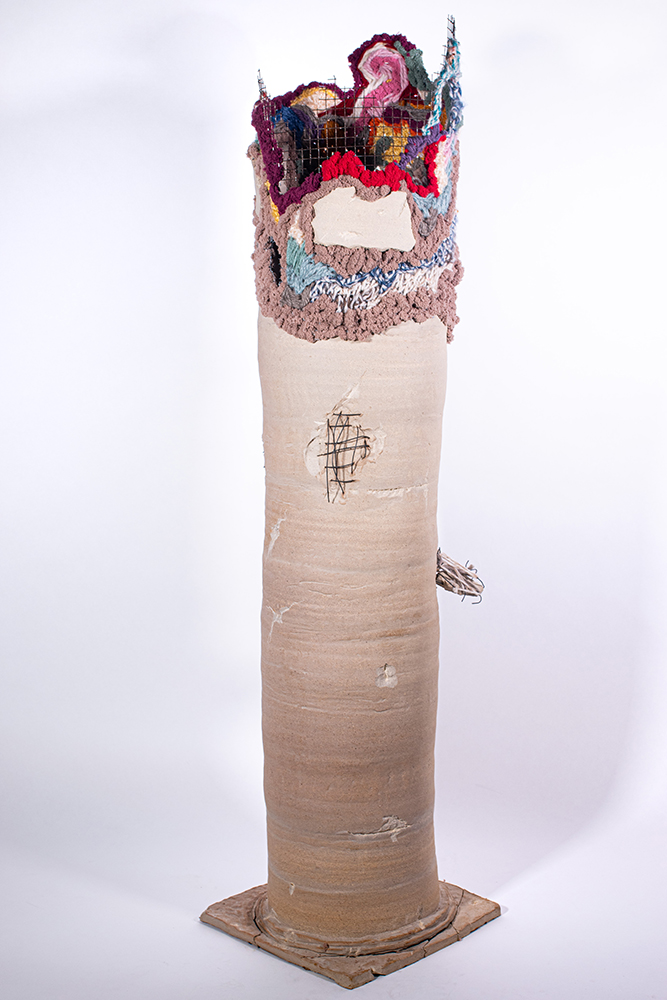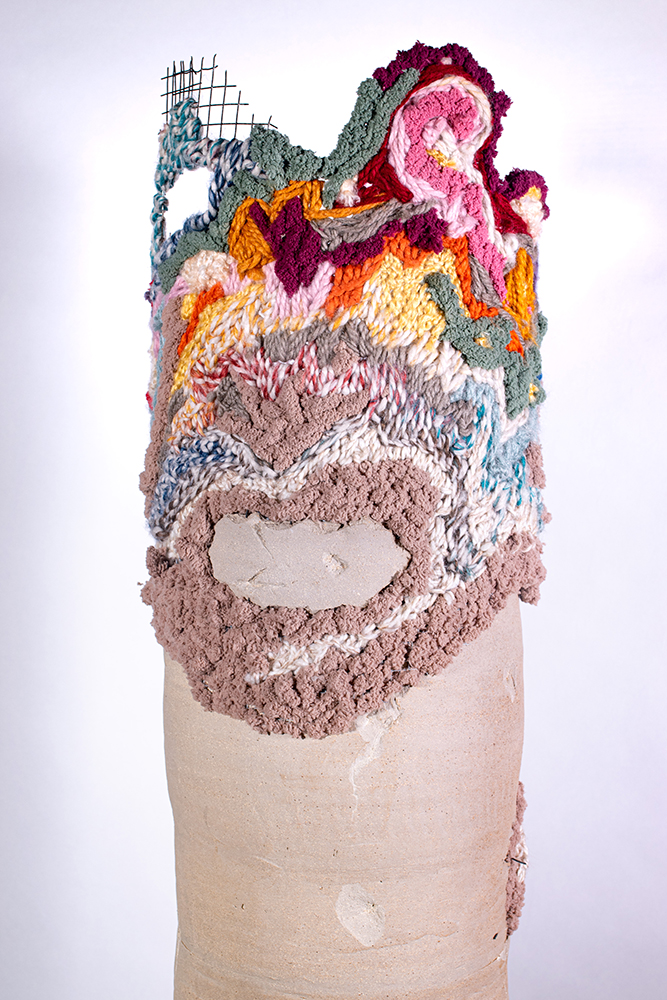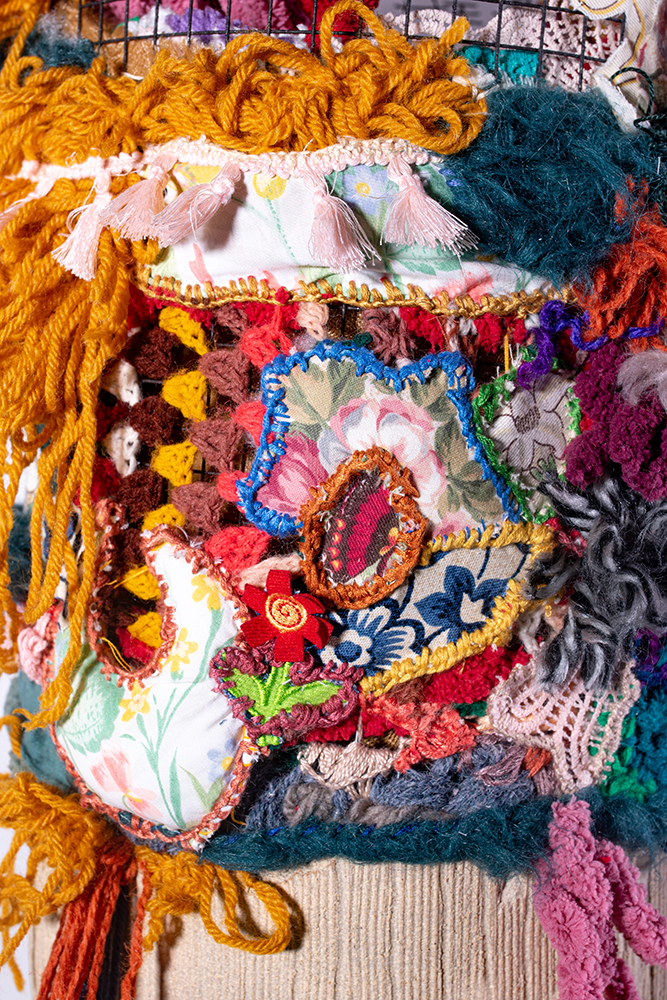Featured Fall 2020 Work
Damage and Repair
Madeline England MA Thesis Exhibition
This solo exhibition Madeline England: Damage and Repair features the work created in the MA program at UA Little Rock. England has created a series of sculptural objects incorporating ceramics and mixed media.
Her work is about damage and repair. Each piece showcases a different fibrous display of color and energy, eluding to a spectrum of positive growth.
Madeline England states: “I’m using damaged architectural structures, undergoing fibrous restoration to represent positive healing after grief and trauma. It’s to promote letting go of self destructive behaviors after experiencing emotional and mental damage, which is something I’ve struggled with.”
A virtual artist talk will take place December 4th at 6pm via Zoom. For details regarding this event, please email Madeline at mmengland@ualr.edu.
Ann Maners and Alex Pappas Gallery (WCAD, Level 1)
November 20, 2020 – December 16, 2020

Madeline England
MA – Ceramics
Artist Statement
My work is about personal growth resulting from cycles of damage and repair. The visual discussion of growth emerges through the use of damaged architectural structures undergoing regeneration. The transition period from breakdown to breakthrough is an important element in my work. It’s about the process of evolving into a more optimistic being after experiencing emotional and mental deterioration. Visualizing collapse and emergence through this body of work represents the choice to approach healing in a positive and healthy way, through time and determination.
This work explores architectural structures, which I make from clay, especially those that offer us support and safety. I chose clay for its transitional nature. It lives through so much change, yet asking us to be patient with it at the same time. My work considers the comparative nature of humans and structures and the shared fragility between the two. The structures are broken, showing their inner wire skeleton and vulnerability. A main characteristic of architecture is the expectation of durability and longevity. This expectation is synonymous with life, though despite efforts to meet them, breakdowns are bound to happen. The response to these difficult experiences is what measures one’s level of growth. Energetic beauty emerges from a breakdown, as represented by colorful and textured fibers woven into skeletal wire remains. Fiber’s tactility suggests comfort, familiarity, and intimacy. The fiber is important because its warmth honors the damage while promoting acceptance among the change. The fiber design process requires a lot of time and patience, as does healing.
Growing through pain is important. Subscribing to anger can promote self-destruction, whereas an investment in the process of healing can foster a balanced restoration with new capacities. The work is a reminder that with time, patience, and determination, it is possible to undergo positive personal repair after mental and emotional damage.
Damage and Repair
Column: Energy
2020
stoneware, fibers, wire
24” x 13” x 13”
Column: Growth
2020
stoneware, fibers, wire
54” x 13” x 13”
Column: Tree Trunk
2020
stoneware, fibers, wire
38” x 28” x 12”

